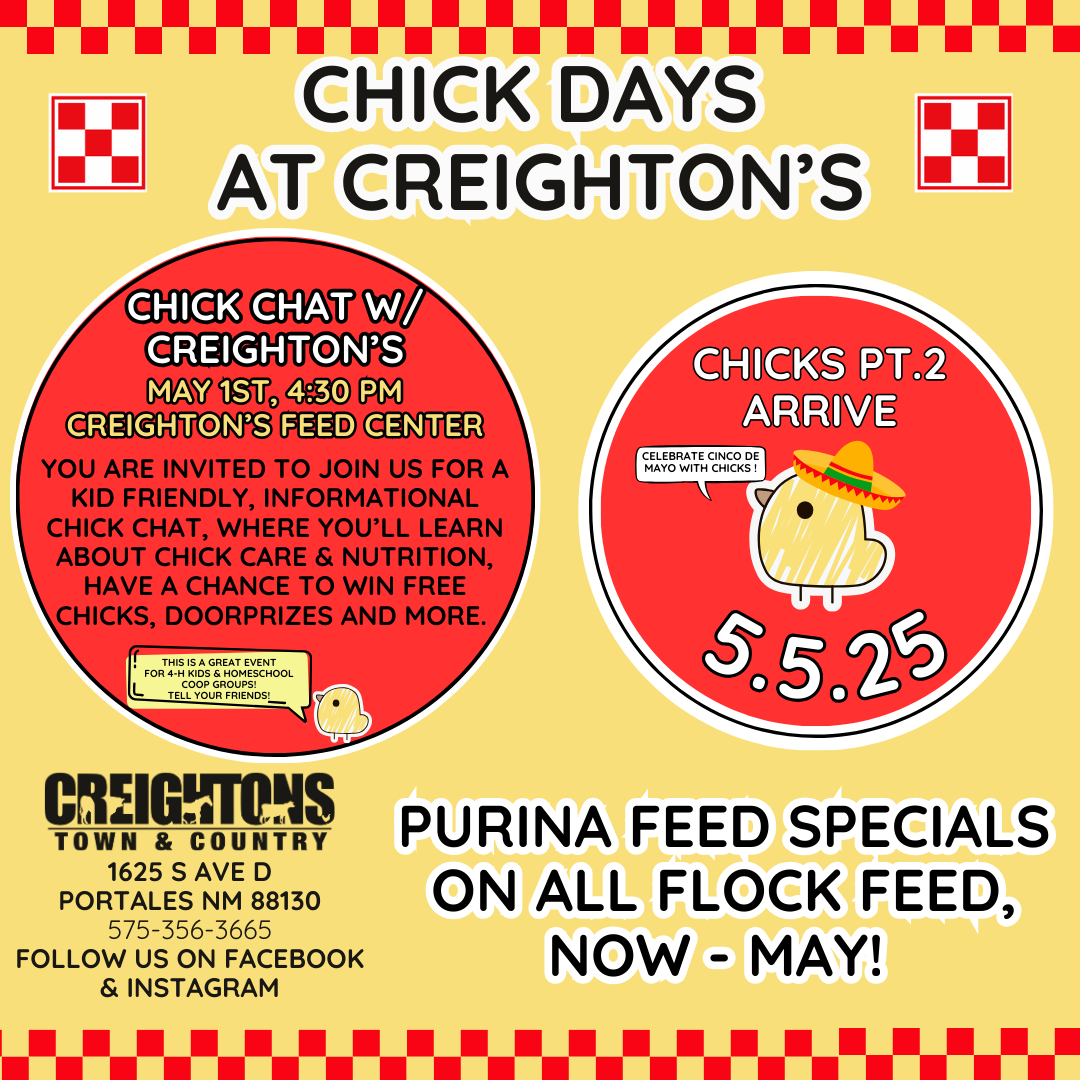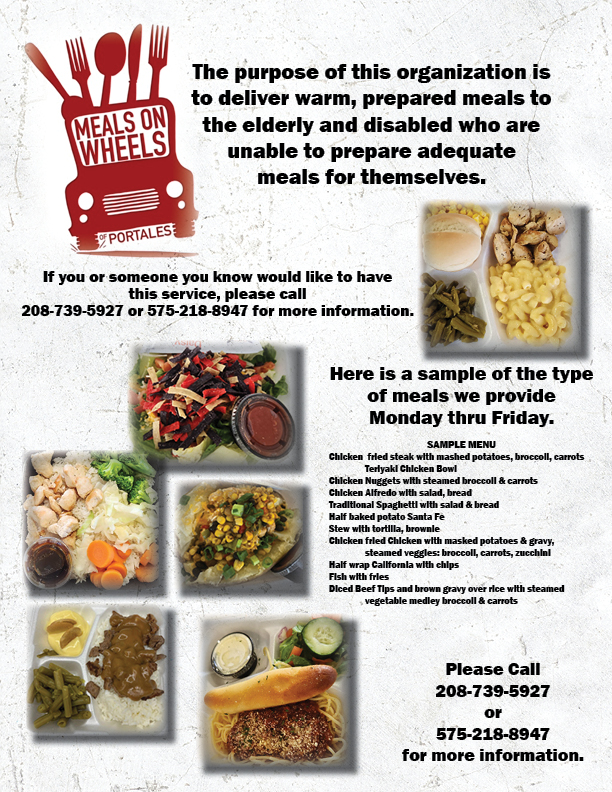Recipes from Delish.com
Thanksgiving is just around the corner, and while you’re planning your menu for the big food-famed holiday, consider some of the following recipes. They are yummy alternatives to the usual Thanksgiving staples! We hope you enjoy!
Crockpot Turkey Breast
by KAT BOYTSOVA

Who says you have to turn on your oven to make delicious turkey? After trying this easy recipe, not us. All you need to do is mix up a simple brown sugar rub, coat the meat, and let your Crock-Pot do the rest! That way, your oven can take on more important tasks like pumpkin pieand sweet potato casserole. 😏
Turkey breast is very lean, so everyone’s biggest fear when roasting a whole bird is that the breast meat will dry out. If you don’t brine it, even if you use a meat thermometer, you risk biting into some sad meat. Well, good news: with our slow-cooker method is a way to guarantee moist meat every single time.
How big should my turkey breast be?
This recipe will work with any size turkey breast—so long as it fits in your slow cooker! A typical bone-in breast sold at the grocery store—which is actually half of the turkey breast—will serve 2 to 4 people, depending on how hungry you are.
Don’t skip the rub.
You want this bird to be flavorful! We rub it with a simple four-ingredient seasoning blend of brown sugar, chili powder, paprika, and garlic powder.
Add some liquid.
More flavor comes in with this step: You make a simple broth of chicken stock, soy sauce (for that umami flavor), and honey and pour that into the bottom of the slow cooker.
Get that crispy skin.
Once the bird has slow-cooked, you’re going to want to take the next step to get crispy skin. (Trust us, it’s worth it.) When you’re ready to serve, heat your broiler and bake the skin until golden and crispy, 3 to 4 minutes.
Use drippings for gravy.
Don’t toss the juices leftover in the slow cooker! Put them to good use in a gravy for your turkey. Pour them into a liquid measuring cup and add more chicken broth until you have 2 cups total. Add equal parts butter and flour to a large skillet over medium heat, whisking until it becomes a thick paste. Add 1/2 cup liquid, whisking to combine, then slowly add remaining liquid in batches until the gravy is smooth and no lumps remain. Simmer until it reaches your desired consistency, then pour into a gravy boat or serving vessel.
Using a frozen turkey breast?
Transfer it to the fridge a full 24 hours (and maybe longer depending on the size) to let thaw.
Yields: 4 servings
Prep Time: 10 min.
Total Time: 3 hours 15 min.
Ingredients:
- 1 (approx. 6 lb.) Bone-in, skin-on turkey breast, room temperature
- 2 Tbsp. Packed light brown sugar
- 1 Tbsp. Chili powder
- 1 Tbsp. Smoked Paprika
- 1 tsp. Garlic Powder
- Kosher Salt, to taste
- Freshly ground black pepper
- 1/2 c. Chicken broth
- 1/4 c. Soy sauce
- 2 Tbsp. Honey
- 2 Tbsp. Freshly chopped parsley
Directions:
- Grease a large slow cooker with cooking spray. Roll a large piece of aluminum foil into a rope and then fold the rope into an oval. Place in slow cooker, creating a rack for the turkey.
- In a small bowl, whisk together brown sugar, chili powder, paprika, and garlic powder. Pat turkey dry with paper towels and season generously with salt and pepper. Press sugar mixture all over turkey, then place in slow cooker, breast side up.
- Whisk together chicken broth, soy sauce, and honey and pour into bottom of the slow cooker.
- Cook on low for 3 to 4 hours, until a thermometer inserted into thickest part of the breast reads 165°.
- Heat broiler. Transfer turkey to a rimmed baking sheet and broil until skin is crispy and golden, 3 to 4 minutes. Let rest 15 minutes before slicing.
- Garnish with parsley and serve.

Cornbread Stuffing
Truth: Not everyone likes classic Thanksgiving stuffing. However, it’s hard to be mad at sweet, crunchy-yet-tender cornbread stuffing. We’re okay with this. Also known as cornbread dressing, this dish is a classic in the South, where you’ll often find it mixed with sausage, bacon, jalapeños, nuts, even chopped oysters. We kept ours simple with flavors you’d find in classic stuffing, but don’t let us stop you from jazzing up your own version with extras.
What’s the difference between cornbread stuffing and dressing?
It’s up for debate. Stuffing usually implies that it’s stuffed and baked inside the bird, while “dressing” is a proper casserole side dish, baked separately. Nowadays, the terms can be used interchangeably. (We usually call it stuffing, but don’tusually stuff it in the turkey during the bake.)
What is the history of cornbread stuffing?
It has roots in the South African couscous-like dish called kusha, which evolved in America, where enslaved people swapped cooked cornmeal as the grain. Cornbread dressing recipes written by the enslaved have been uncovered in the South.
Do I need to make my own cornbread?
No. We like to use our classic (and best) cornbread recipe, and we highly suggest you do the same. To make things easier, bake it the night before; by allowing it to cool completely and drying out a bit overnight, it’ll be easier to break the cornbread into bigger, heartier hunks rather than small crumbles. You can also start with store-bought cornbread or a classic mix like Jiffy—just make sure that it will yield enough for this recipe.
Should I start with stale cornbread?
We like to! It reduces the risk of soggy stuffing and helps ensure the top gets super crispy. If you only have access to fresh cornbread, all is not lost: break up the cornbread into bite-sized pieces, spread on a sheet pan, and dry out the bread in a 200º oven for 20 to 30 minutes. Technically, you can use freshly baked, fully cooled cornbread, but your stuffing will be quite moist, closer to a corn casserole than a tender stuffing. (Or, if you like your stuffing super moist and only have stale bread, whisk in an extra cup of broth! This recipe can handle it.)
Why do I need eggs in cornbread stuffing?
Cornbread stuffing is inherently crumbly—the eggs help bind everything together. Otherwise, you’ve just got cornbread croutons mixed with sautéed veggies, which doesn’t super appealing.
How do I prevent gummy cornbread stuffing?
A gummy stuffing texture is due to the amount of stock (liquid) that you use. Too much and you’ll have an overly moist, often gummy cornbread. Too little and you could risk a very dry bake. We think 1 cup is the perfect ratio for this recipe. A good rule of thumb to follow: Add liquid gradually. You want your cornbread to absorb the liquid; you shouldn’t have a pool in the bottom of your mixing bowl.
How do I store leftovers of cornbread stuffing?
Keep leftovers covered or in an airtight container in the fridge for up to 4 days. You can turn them into leftover stuffing waffles for a quick Thanksgiving sandwich, or use ’em up in a Thanksgiving stuffed pepper!

Yield: 8 servings
Prep Time: 20 min.
Total Time: 1 hour 50 min.
Ingredients:
For the Cornbread
- Cooking spray, for pan
- 1 1/2 c. Yellow cornmeal
- 3/4 c. All-purpose flour
- 1/4 c. Packed brown sugar
- 2 tsp. Baking powder
- 1 tsp. Kosher salt
- 1 c. Whole milk
- 1/2 c. Buttermilk
- 2 large eggs
- 3 Tbsp. Melted butter, cooled slightly
For the Stuffing
- 3 Tbsp. Butter, plus more for pan
- 1 large onion, chopped
- 2 stalks of celery, chopped
- Kosher salt
- Fresh ground black pepper
- 3 Cloves of garlic, minced
- 2 Tbsp. Freshly chopped sage
- 2 tsp. Fresh thyme leaves
- 2 eggs
- 1 c. Chicken broth
- Freshly chopped parsley for garnish
Directions:
- Preheat oven to 400° and grease a 9″-x-13″ baking pan generously with cooking spray. In a large bowl whisk together cornmeal, flour, brown sugar, baking powder, baking soda, and salt.
- In another large bowl, whisk together milk, buttermilk, eggs, and melted butter. Add wet ingredients to dry ingredients and stir with a fork until just incorporated.
- Pour batter into prepared baking dish and bake until top is golden and a toothpick inserted into the center comes out clean, 20 to 25 minutes. Let cool completely then crumble into large pieces and transfer to a large bowl. Grease a large baking dish with butter and reduce oven temperature to 375°.
- In a large skillet over medium heat, melt butter. Stir in onion and celery and season with salt and pepper. Cook until soft, about 8 minutes, then stir in garlic, sage, and thyme and cook until fragrant, about 1 minute. Remove from heat and toss with crumbled cornbread. Season with salt and pepper.
- In a small bowl, whisk together eggs and chicken broth. Pour over cornbread mixture and toss to coat, then transfer to prepared baking dish. Bake until toasted on top and hot throughout, about 30 minutes.
Gravy Without Drippings
Sauce is awesome. This is not a controversial statement. However what may be a controversial statement for some (but definitely not for those in the Delish kitchen) is that gravy is the bestsauce. Gravy is luscious and full of umami, one of our favorite food enhancers. What other sauce could be drizzled over all the different types of meats, veggies, and sides of a holiday meal. And we think that your Thanksgiving only deserves the best, which is why perfecting gravy is worth it—and so easy!
What is gravy?
At its most basic, gravy is a thickened sauce made of meat drippings + stock + seasonings.
What does the flour do?
Gravy starts off with a classic roux: equal parts fat (in this case butter) and flour are cooked in a skillet until it becomes golden and bubbly. This creates a base for your sauce’s texture. Without the flour, it will lack the coveted thickness and body.
How do I save turkey drippings?
The essential ingredient to perfect gravy? Fat! As your turkey bakes, it renders a ton of fat that’ll be leftover in the roasting pan. Don’t—we repeat, don’t—pour that fat into the garbage! Those drippings are packed with flavor, all of which you want in your Thanksgiving gravy. After you take the turkey out of the roasting pan, set a colander or sieve over a large bowl or another pan. Pour the contents of the roasting pan through the colander—the drippings you want to keep will end up in the large bowl. You can discard the bits left in the colander.
Do I need to use fresh herbs?
Not necessarily. We love the flavor of fresh thyme and sage, but dried herbs will totally work. You can swap out the thyme and sage for the same amount of poultry seasoning, rosemary, even Italian seasoning.
Any other ingredients I can add for flavor?
Of course. Roasted garlic is a no-brainer—and requires basically no effort: Simply lop off the top of a head of garlic, place in foil, drizzle with olive oil, and wrap up. Throw into your already-full oven alongside the turkey and stuffing until it caramelizes into sweet, tender cloves. Roughly chop once cool and stir into the gravy with the herbs.
How long does gravy take to make?
Only 15 minutes—the perfect activity to begin while your bird rests when it’s out of the oven. And since you absolutely need your leftover turkey drippings for traditional gravy, you can’t start on it until your turkey is done roasting. Let the bird cool in the roasting pan for 20 minutes, then remove it to a cutting board to cool completely. That way, you can get to work on gravy ASAP.
My gravy is too thin—how do I thicken it?
If you’re whisking away at the stove and the gravy isn’t taking on the texture you want, no fear. Stir a little cornstarch (a couple teaspoons) into a small bowl of cold water until a thick paste forms. Slowly whisk into your gravy a little bit at a time until it reaches your desired consistency.
How long does gravy last?
Gravy is perishable, so it will only last 2 days in the refrigerator. However, you can freeze leftover gravy up to 3 months in an airtight container or plastic bag. Thaw the mixture in the fridge the day before you plan to reheat it.
Can I halve this recipe?
Absolutely. If you’re serving a smaller crowd, feel free to scale down the measurements. But know that leftover gravy tastes amazing on sandwiches the next day. It also freezes well when stored in an airtight container.
So, why is it called gravy?!
The term gravy actually dates back to the Middle Ages and the French term “gravé”, which literally means the natural cooking juices that flow from the meat.

Yield: 8 servings
Cook Time: 10 min.
Total Time:15 min.
Ingredients:
- 3 Tbsp. Butter
- 3 Tbsp. All-purpose flour
- 1 c. Turkey pan drippings
- 2 c. Chicken broth (or Turkey stock)
- Kosher salt
- Freshly ground black pepper
- 1 tsp. Freshly minced thyme
- 1 tsp. Freshly minced sage
Directions:
- In a small saucepan over medium heat, melt butter. Whisk in flour and cook until golden, 1 minute, then whisk in pan drippings. (If you have more than a cup of drippings, use it and reduce the amount of broth!)
- Bring mixture to a boil, then reduce heat and simmer gently until slightly thickened.
- Stir in fresh herbs, then whisk in 1 cup broth and return mixture to a simmer. Season with salt and pepper.
- Simmer 10 minutes, gradually adding more broth if gravy is too thick. Adjust seasoning.
Best Mashed Potatoes
Quick name one thing better than creamy, buttery, steamy, perfect mashed potatoes! See? You can’t! So, put down the instant potatoes! (June actually happens to love instant mash.)
Though people have many different thoughts on mashed potatoes like keeping skin on the potatoes vs. peeling them, using milk vs. cream or butter vs. sour cream, we on the Delish Test Kitchen team put our culinary noggins together to create these near-perfect spuds. They combine all of our absolute favorite things about mashed potatoes but still allow you to customize them yourself.
And making these homemade mashed potatoes is insanely easy. But what actually separates amazing mashed potatoes from subpar ones? See our top tips below.
Go For a Mix of Potatoes
Russet potatoes (the classic brown-skinned ones used for baked potatoes) are the classic go-to for mashed potatoes, but you don’t have to stick to only those. We like using a mix of russet and Yukon gold, which have a super-creamy texture.
Peel—Or Don’t
This is the age-old debate: Should you peel your potatoes for mashed potatoes?! Many people in the Delish kitchen fall into the camp of people who happen to love the texture that the skin add. But it’s entirely up to you.
Use All The Butter
Our recipe calls for a whole stick, but real butter enthusiasts might even want to use another few tablespoons. We like to melt our butter with milk in a saucepan so the milk is warm when it hits the mashed spuds.
Go For Full-Fat Everything
Starchy potatoes need serious fat to turn them creamy, so skip low-fat varieties for sour cream and milk, which will produce drier mashed potatoes.
Don’t Be Afraid of Going Heavy on Seasoning
Mashed potatoes are begging for salt and pepper. Potatoes need a lot of salt—go heavy! This will help bring out their buttery flavor and ensure they don’t taste lackluster.
Add All the Mix-ins
We’re obsessed with loaded mashed potatoes—who isn’t?!—so we totally encourage you to stir in shredded cheddar or Parmesan, cooked bacon bits, chives, the works, after you add the melted butter-milk mixture. Truly any fresh herb or cheese will only help mashed potatoes taste amazing.

Yield: 6-8 servings
Prep Time: 25 min.
Total Time: 30 min.
Ingredients:
- 3 lb. Mixed potatoes, such as Russet and Yukon gold
- Kosher salt, to taste
- 1/2 c. (1 stick) butter, plus 2 Tbsp. for garnish
- 1/2 c. Milk
- 1/2 c. Sour cream
- Freshly ground black pepper
Directions:
- In a large pot, cover potatoes with water and add a generous pinch of salt. Bring to a boil and cook until totally soft, 16 to 18 minutes. Drain and return potatoes to pot.
- Use a potato masher to mash potatoes until smooth.
- Meanwhile, in a small saucepan, melt butter and milk until warm.
- Pour over warm milk-butter mixture and stir until completely combined and creamy. Add sour cream and stir until combined.
- Season mashed potatoes generously with salt and pepper.
- Transfer potatoes to a serving bowl and top with remaining two tablespoons butter. Season with more pepper before serving.
Roasted Vegetables
Amidst all of the Thanksgiving casseroleswe usually end up craving some simple, no-fuss roasted vegetables. And this coloful medley is definitely worthy of a spot on your Thanksgiving plate. The dried cranberries and balsamic vinegar add some sweetness and tartness while the pecans add an extra crunch. We use Brussels sprouts and carrots, but feel free to add extra vegetables or swap in some of your favorites.
Low on oven space? Use your air fryer instead! The counter appliance is essentially a mini convection oven and results in extra-crispiness.

Yield: 4 servings
Cook Time: 25 min.
Total Time: 30 min.
Ingredients:
- 3/4 lb. Brussel Sprouts, trimmed and halved
- 2 large carrots, peeled and sliced into 1/2 inch pieces
- 2 Tbsp. Extra virgin olive oil
- 1 Tbsp. Balsamic Vinegar
- 1 tsp. Chopped rosemary leaves
- 1 tsp. Chopped thyme leaves
- Kosher salt
- Fresh ground black pepper
- 1/2 c. Toasted pecans
- 1/2 c. Dried cranberries
Directions:
For the Oven
- Preheat oven to 400°. Scatter vegetables on a large baking sheet. Toss with oil, balsamic vinegar, rosemary, and thyme. Season with salt and pepper.
- Bake for 20 to 25 minutes, until the vegetable are tender, shaking the pan halfway through.
- Before serving, toss roasted vegetables with pecans and cranberries.
For the Air Fryer
- In a large bowl, toss vegetables with oil, balsamic vinegar, and herbs. Season with salt and pepper.
- Place vegetables in basket of air fryer and cook at 400° for 10 minutes, shaking halfway through.
- Before serving, toss roasted vegetables with pecans and cranberries.
Fresh Cranberry Relish
On Thanksgiving, there’s never enough stovetop or oven space. There’s just too. much. cooking. But that doesn’t mean you should give up and go buy a can of cranberries. Unlike traditional cranberry sauce, this easy relish doesn’t require any cooking and can be made entirely in the food processor—which means one more free burner and one less dirty saucepan to clean. It’s what we like to call a win-win. We loved using orange and lemons to add a zesty kick but you could use any citrus fruit you like. Lime or grapefruit would be amazing!

Yield: 6 servings
Prep Time: 5 min.
Total Time: 5 min.
Ingredients:
- 1 lb. Cranberries
- 1 c. Granulated sugar
- Juice and zest of 1 orange, plus more for serving (optional)
- Juice and zest of 1/2 lemon
- 3/4 tsp. Kosher salt
- 1/4 tsp. Ground cinnamon
Directions:
- Combine all ingredients in a food processor and pulse until berries break down.
- Refrigerate until ready to serve. Garnish with more zest, if using.
Sweet Potato Cheesecake
by KAT BOYTSOVA
Sweet potato pie is expected at Thanksgiving, maybe even… boring? Okay don’t come for us we love sweet potato pie. But this year we are shaking things up with another scrumptious way to use those sweet spuds. A cheesecake! Sweet potato adds a nuttiness and earthy sweetness that can take a normal cheesecake to another, more festive level. And you can’t beat that orange-y color!
Also! For this cake we thought we’d swap the traditional graham cracker crust for one made with gingersnap for a spice-filled, autumnal twist on the classic. Oh, and you’re going to be obsessed with this crumb topping. It’s as fall as a fall dessert can be and unapologetically so. Put down the marshmallows and welcome to crumb heaven.

Yield: 6-8 servings
Prep Time: 40 min.
Total Time: 6 hours 40 min.
Ingredients:
For the Crust
- 10 oz. Ginger snaps
- 1/4 tsp. Kosher salt
- 1/2 c. (1 stick) melted butter
For Cheesecake
- 2 (8 oz.) packages of cream cheese, softened and cut to small pieces
- 3 large eggs, room temperature
- 3/4 c. Granulated sugar
- 1 tsp. Pure vanilla extract
- 1/4 tsp. Kosher salt
- 6 oz. Sour cream, room temperature
- 1/4 c. Maple syrup
- 1 tsp. Cinnamon
- 1/2 tsp. Nutmeg
- 1 1/2 c. Roasted sweet potatoes, peeled and puréed in a food processor
For Topping
- 3/4 c. lightly packed dark brown sugar
- 1/4 c. granulated sugar
- 1 tbsp. ground cinnamon
- 1/4 tsp. kosher salt
- 12 tbsp. (1 ¼ sticks) melted butter, warm
- 1 3/4 c. all-purpose flour

Directions:
- Make crust: Preheat oven to 350°. Pulse gingersnaps and salt in a food processor until fine crumbs form. Drizzle in melted butter and mix until fully incorporated. Transfer to a 9” spring form pan and press firmly into the bottom and slightly up the sides.
- Bake crust until golden brown around edges, about 10 minutes. Let cool until ready to use.
- Make filling: Reduce oven to 325°. In a large bowl using a hand mixer, beat cream cheese on medium high speed until very smooth. Add eggs, sugar, vanilla, salt, sour cream, maple syrup, and cinnamon. Continue to mix, scraping down sides as needed until mixture is smooth. Add sweet potato puree and mix until no lumps remain.
- Pour cheesecake filling into cooled crust and bake until almost set, about 1 hour.
- Meanwhile, make the topping: In a medium bowl, whisk together both sugars, cinnamon and salt. Add warm melted butter and stir to combine. Using a fork, mix in flour until a moist mixture forms.
- Remove cheesecake from oven and sprinkle topping over, squeezing it in your hands to make medium sized clumps. Bake cheesecake until topping is beginning to look golden, and cheesecake no longer jiggles in the middle, about 30 to 35 minutes more. Let cool to room temperature and then refrigerate until well chilled, at least 4 hours.
Mississippi Mud Pie
Its origins may be Mississippi, but one thing’s for sure: Any other sweet is hard to compete with this layered masterpiece comprising a graham-cracker base, brownie, and pudding, all crowned by whipped cream. It all makes for a rich (and delicious) treat, and that’s the point.
Yields: 8 servings
Prep Time: 30 min.
Total Time: 8 hours
Ingredients:
For the Crust
- 10 oz. Chocolate Teddy Grahams
- 15 Graham Crackers
- 40 Oreos (Filling Removed)
- 8 Tbsp. (1 stick) unsalted butter, melted
- 3 Tbsp. Granulated sugar
For the Brownie
- 1 1/4 c. Nutella
- 2 Large eggs, room temperature
- 3 oz. Chocolate Hazelnut Bar, chopped
- 1/2 c. All-purpose Flour
For the Chocolate Pudding
- 1 c. Granulated sugar
- 3 Tbsp. Cornstarch
- 1/4 c. Cocoa Powder
- 1/2 tsp. Kosher salt
- 2 1/2 c. Half & Half
- 4 large egg yolks
- 2 Tbsp. Unsalted Butter
- 4 oz. Milk Chocolate, chopped
- 1 tsp. Pure vanilla extract
For the Whipped Cream
- 16 oz. (1 pint) Heavy whipping cream
- 2 Tbsp. Powdered sugar
- 1 tsp. Pure vanilla extract
- Optional garnishes: Cocoa powder, chocolate shavings, nuts, cookie crumbs

Directions:
- Make the Crust: Position a rack in the center of the oven, and preheat the oven to 325°. Line the bottom of a 9” springform pan with parchment paper.
- Add cookies (or graham crackers) to a food processor, and pulse until crumbs form (If you don’t have a food processor you can use a rolling pin to crush them in a ziplock bag).
- Add cookie crumbs to a bowl and stir in melted butter and (optional) sugar. Press the mixture firmly onto the bottom and about 1″ up the sides of the pie plate/springform pan (Don’t press too hard).
- Bake for 10 minutes, then remove the pan from the oven and allow the crust to cool.
- Make the Brownie: Preheat the oven to 350°. Add the Nutella to a small microwavable bowl, and microwave it in 30-second intervals, until the consistency is sauce-like. Let cool slightly.
- Transfer the Nutella to a large bowl, and whisk in 1 egg at a time. Add the flour and mix until well combined.
- Fold in the optional chocolate bar pieces, then add the brownie mixture to the prepared pie crust. Bake for 20-25 minutes.
- Make the Pudding: In a medium saucepan, whisk the sugar, cornstarch, cocoa powder and 1/2 teaspoon salt. Add the half-and-half and egg yolks, and whisk to combine. Cook over medium heat, whisking constantly, until thickened and pudding-like, 10 to 12 minutes. Remove from heat and stir in the butter, chopped chocolate, and vanilla extract. Let cool.
- Assemble the Pie/Whip the Cream: Spread all of the pudding into an even layer on top of the brownie. Place plastic wrap directly on the surface of the pudding, and refrigerate until cold. Chill for 4 to 6 hours, or up to overnight.
- Before serving, whip the heavy cream with (optional) powdered sugar and vanilla, until some soft peaks form.
- Remove plastic wrap and spread whipped cream in an even layer on top. Dust with optional cocoa powder, chocolate shavings and/or nuts and cookie crumbs.
- When ready to serve, remove the pie from the springform pan.







































